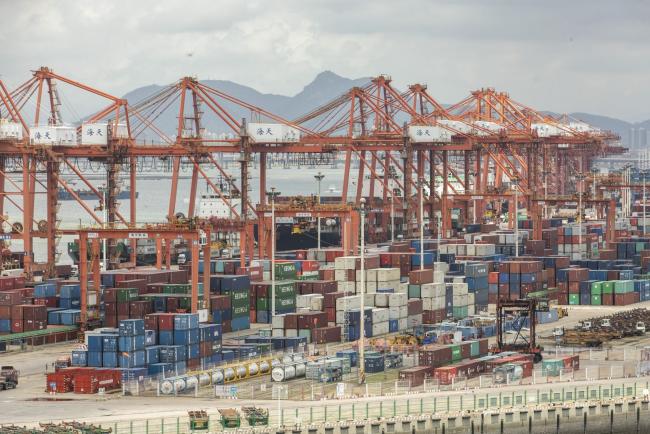(Bloomberg) -- Terms of Trade is a daily newsletter that untangles a world embroiled in trade wars. Sign up here.
Leading indicators of China’s trade performance are pointing to a bad situation becoming worse, adding pressure on negotiators meeting with U.S. counterparts this week to inch toward a deal that would stave off the arrival of yet more tariffs.
China’s exports contracted last month and shipments to the U.S. plunged. The tariffs President Donald Trump added this month are set to bite and his administration is preparing to pile on yet more duties in October, and more again in December if there is no breakthrough in the negotiations.
Liao Min, deputy director of the Office of the Central Commission for Financial and Economic Affairs and vice finance minister, is leading the delegation that aims to prepare for a meeting of top negotiators in October.
So-called front-loading of shipments ahead of tariffs may help to mitigate the impact on China in the short-term but economists surveyed by Bloomberg News still see export growth slowing to 0.3% this quarter from a year earlier, flat-lining in the last three months of the year and bottoming out at minus 0.8% in the first quarter of 2020.
“We expect the outlook for global demand, and thus China’s exports, to remain subdued in the coming months,” said Louis Kuijs, chief Asia economist at Oxford Economics in Hong Kong. “I don’t think any possible front-loading, or Christmas, is going to change that picture substantially.”
Here’s what some key leading indicators say about the outlook for China’s exports:
Export Delivery Value
This is the most worrying of the indicators, showing a steep decline in Chinese products manufactured but not yet shipped. This may suggest that exporters are cutting back production and that even front-loading activities are slowing down.
PMI Export Orders
The Purchasing Managers’ Index sub-gauge for exports picked up a tad in August while remaining deep in contraction territory at 47.2. The improvement was likely due to some front-loading of U.S.-bound exports in the $300 billion batch of Chinese products hit by additional 15% tariffs from 1 September, according to Nomura International. The second tranche faces higher tariffs from 15 December. Front-loading shipments now borrows demand from the future, suggesting a weaker outlook ahead.
Trading-Partner PMIs
The PMIs of many of China’s major trading partners look anemic. There are other bad signs, too. A widely watched index of manufacturing activity in the U.S. compiled by the Institute for Supply Management showed a contraction in August -- the first since 2016. The Sept. 3 data release sent U.S. stock prices and bond yields tumbling.
What Bloomberg’s Economists Say...
“The signs of front-loading suggest that exports of goods such as toys could weaken should the threatened tariffs be implemented in December. The yuan’s recent weakness offers limited offset to the range of negative forces.”Chang Shu, Chief Asia EconomistFor the full note click here
To contact Bloomberg News staff for this story: Kevin Hamlin in Beijing at khamlin@bloomberg.net;Miao Han in Beijing at mhan22@bloomberg.net
To contact the editors responsible for this story: Jeffrey Black at jblack25@bloomberg.net, James Mayger
©2019 Bloomberg L.P.
